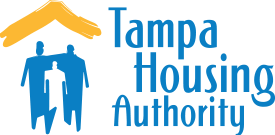Modernizing PHA Technology to Increase Tenancy & Satisfaction

Modernizing PHA Technology to Increase Tenancy & Satisfaction
by Jerome Ryans, President & CEO, Tampa Housing Authority
Generally speaking, technology in public housing authorities tends to be lacking. Much of it was set up decades ago - and hasn't been updated since due to concerns over funding and an overall sense of it being less of a priority than other issues.
While there are definitely problems that can overshadow old, clunky technology for housing authorities, it's one of those things that just gets worse as the years pass, ultimately bleeding into other areas and causing bigger and more widespread issues.
In contrast, modernizing agency technology brings with it a host of benefits - both for staff members working in the agency and for those interacting with the PHA from the outside, such as residents and potential residents.
Let's take a closer look at some of the benefits of modernizing technology in public housing authorities.
Invest in Technology to Ease Processes in the Long-Run
One of the biggest hurdles to modernizing the IT aspects of public agencies is short-sightedness regarding cost. Essentially, it may feel like a big expense - in both money and time - to upset current systems in order to implement new ones. But the increased efficiency of using updated technology can save your agency thousands - if not millions - of dollars per year in operational costs.
If you need to persuade others of this benefit in order to take this step, work with someone in your accounting/budgeting department to generate data on this. Try to visually represent the dollars you'll save in avoiding errors, reducing or even eliminating some administrative work, and time spent waiting to be able to work due to technology malfunctions. It's also difficult to account for the savings from stress-reduction for agency employees; however, it's reasonable to wager that less stressed employees will take fewer sick days and work more optimally when present.
What are some things you can do?
Make Your Online Functions Mobile-Friendly
This includes getting into the world of apps. You know that parts of the public housing process involve fairly repetitive forms, applications, and information submissions. What if residents could have a stable profile from which much of this information could be pulled when needed? What if residents could fill out a work order form for their building while waiting in line at the grocery store?
Abandon the Paper - Digital Updates
In a similar vein, what can be transferred from paper mail to email or a website announcement? This can be a two-way street. Instead of residents having to make a trip to the post office to mail paper applications to a PHA, determine what is safe to email - and what safe, encrypted forms you can create to do this part online.
Could this Be Automated?
A frequent problem that we see at PHAs is a staff stretched a bit thin with duties. Even the employees of a well-staffed PHA office will report that they always have something on their plate. Because the demand for housing is so high, paperwork and meetings can form a seemingly never-ending cycle. This continual rotation of work is absolutely necessary, but is it necessary for us to attend to all the minute administrative details of these tasks?
This is the central question of automation: Does a human need to do this repetitive task? Or can a computer do it? Can AI software do it? For example, if you are filling out the same form over and over for a particular part of your job, can it be auto-filled instead?
It may prove very useful to go through all your processes on at least a quarterly basis and ask yourself this question. Look at processes with fresh eyes to see where you can let go - and let technology support you. This will allow you more time to focus on the tasks where your presence really matters, like meeting with potential residents or writing a particularly persuasive grant letter.
Make Wifi Part of Housing Developments
This idea can feel like it's hiding in plain sight. Naturally, if we want the residents of public housing to use our new and improved technology infrastructure, it would help to make sure that wifi is readily available and accessible in public housing buildings.
This effort may need to reach back as far as the design of the building itself. Will internet companies be able to readily install the cables and routers necessary to provide functional, high-speed wifi connection?
Plan for Gradual Change - and Prepare for Big Shifts
Once you have enough people in your office onboard with changing technology, you'll want to make a plan. Growing pains are to be expected, but you can minimize them by doling out responsibilities for who changes what, communicating when changes will happen, and being responsive to snags that will naturally arise as people learn to use new systems. Even systems that work well may have bugs sporadically, so establish a strong contact line and point people for troubleshooting various IT and technological issues.
Set expectations for your employees and housing residents so that they don't become disheartened by the change: the transition may be a little chaotic, but the payoff in the long run will be worth it.
It's natural for people to need several reminders about this reality. Much like losing weight, you can't expect to see results after a day or two of eating salad. The changes that stick are gradual and consistent, and you'll see their effects in the months and years to come.
You may even want to boost morale during a new technology phase by collecting success stories. For instance, if a mother with two kids successfully renewed her housing application while on a break at work, which made a difference in their acceptance to a new building, tell other residents about that! If a case worker was able to get through digital paperwork in one afternoon instead of two days, spread the word in the office. Small celebrations help ease growing pains.
Occasionally, a big technology shift has to occur in a way that feels more like ripping off a band-aid. This is frequently the case when transferring to a new website, for example.
When an overnight-style change has to happen, double down on communicating proactively and often to prepare everyone involved. Enthusiastically encourage your employees and residents to report instances of things not working correctly, so you and any associated tech companies can tie up the loose ends sooner than later.
The World Is Moving Forward - PHAs Have to Move Forward with It
As new technologies are adopted in more and more parts of our daily lives, we become used to the convenience and speed of interacting that way. Unfortunately, when we encounter situations where the available technology doesn't meet those standards, it can feel frustrating - like things are being made harder than they need to be.
That's the reality that many public housing authorities are facing right now. Outdated technology makes work more difficult for staff members and communication with the PHA harder for those who need something from it. This can lead to negative outcomes, such as higher turnover and lower satisfaction - both from staff members and residents. At a certain point, we are obligated to keep up with technology if we are going to serve our community effectively.
Get things moving in the right direction by encouraging your PHA to modernize. The cost may seem significant now, but the benefits will far outweigh that - and may even serve to lower many long-term expenses. Ultimately, our goal is to move more people into safe, affordable housing where they can thrive, and modernizing our technology can exponentially help us get there.
References:
HUD Office of the Inspector General. (2021). "HUD IT Modernization Roadmap Evaluation Report." Retrieved from [URL]: https://www.hudoig.gov/reports-publications/report/hud-it-modernization-roadmap-evaluation-report#:~:text=HUD's%20Office%20of%20the%20Chief,platforms%20to%20modernized%20cloud%20technologies



